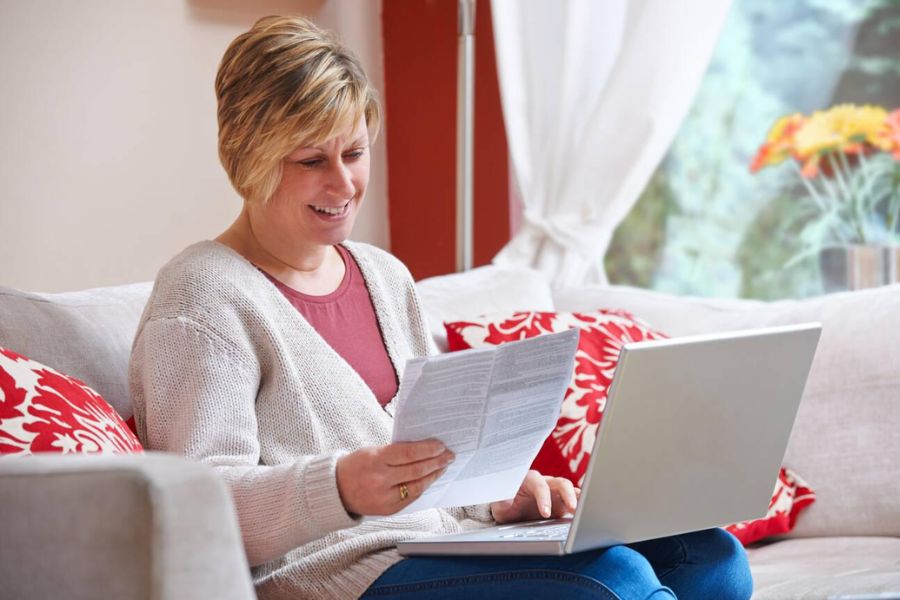When my husband and I realized we were drowning in $45,000 of debt with two young children, we knew we had to take action. Credit cards, student loans, and a car payment left us barely scraping by. The stress felt overwhelming, but we refused to let debt control our family’s future. We paid off all $45,000 in just 17 months by sticking to a strict budget, cutting unnecessary expenses, and using every extra dollar to attack our debt.

It wasn’t easy, especially with kids needing clothes, school supplies, and all the surprises that come with parenting. But with the right plan and determination, becoming debt-free—even on a tight budget—is possible. I’m sharing our journey because I know other parents feel hopeless about their finances. You don’t need a big income or a financial degree to crush your debt. A solid plan and a willingness to make tough choices are what matter most.
Key Takeaways
- Create a detailed budget and debt payoff plan, especially with a limited income.
- Small lifestyle changes like meal planning and cutting subscriptions can free up hundreds of dollars each month.
- Stay motivated by setting clear goals and celebrating small wins along the way.
Our Debt Story and Setting Financial Goals
Our journey started with a crisis that forced us to face our financial reality. We learned that setting specific financial goals and making tough family decisions were essential steps toward freedom.
The Turning Point: Facing Job Loss and Debt
My husband’s sudden job loss in 2015 changed everything for us. We had just taken out a $401k loan to renovate our house after getting pregnant with our second child. When the layoff happened, the loan came due immediately. We didn’t have cash on hand and couldn’t qualify for another loan.
The $401k loan became a withdrawal with heavy penalties. At tax time, we owed thousands to the IRS.
I put the tax debt on a zero percent credit card. Our total debt reached $45,000 across three main areas:
- $25,000 in student loans
- $14,000 car loan
- $6,000 credit card debt from taxes
The severance package helped for a while, but we needed a real plan. I felt desperate searching for solutions online and discovered Dave Ramsey’s debt payoff method.
How We Set Clear and Achievable Financial Goals
I started by writing down our exact debt amounts and interest rates. Seeing the numbers in black and white made the situation feel manageable.

Our main financial goals became:
- Pay off the zero percent credit card before interest started
- Eliminate all consumer debt except the mortgage
- Build a $1,000 emergency fund first
I created spreadsheets to track our progress. This helped me see exactly how extra payments sped up our timeline. We used the debt snowball method and focused on the smallest balance first. Every extra dollar went toward debt while we made minimum payments on the rest.
I calculated that aggressive payments could get us debt free in under two years. This timeline kept us motivated when sacrifices felt tough. Setting weekly and monthly mini-goals helped, too. Celebrating small wins like paying off $1,000 chunks kept our momentum strong.
Family Adjustments and Mindset Shifts
Getting serious about financial freedom meant making tough choices as a family. We explained to our kids why we couldn’t buy certain things. I cut our food budget in half by meal planning every week. We ate lots of chicken tacos and breakfast for dinner instead of expensive steaks.
My husband and I stopped eating out for lunch. This change alone saved us hundreds each month. We sold everything we could find around the house. Even my husband, who never wanted to sell anything, started listing items online.
The biggest mindset shift was agreeing that debt payoff came first. We delayed house projects, vacations, and even buying basics like good shaving cream. I paused retirement contributions for seven months, which felt scary but freed up money for debt payments. We also adjusted tax withholdings to keep more money in each paycheck.
Building Our Debt Pay Off Plan
Creating a solid debt payoff plan became the foundation of our success. I focused on three key areas: selecting the right strategy, building a zero-based budget, and protecting our emergency fund.
Choosing the Right Debt Pay Off Strategy
I discovered Dave Ramsey’s debt snowball method while searching for debt payoff strategies. This approach focuses on paying minimum amounts on all debts while throwing every extra dollar at the smallest balance first.

The debt snowball gave me quick wins and kept my motivation high. I listed all our debts from smallest to largest:
- Credit card: $6,000
- Car loan: $14,000
- Student loan: $25,000
I ignored interest rates completely. Many people argue for paying high-interest debt first, but I needed the psychological boost of eliminating entire balances quickly.
Within three months, I knocked out that first credit card. The momentum was incredible.
I took the $200 monthly payment from the paid-off card and added it to my car payment. This plan worked because it focused on behavior, not just math.
Creating a Zero-Based Budget
My zero-based budget became my most important tool. Before this, I would pay bills and spend whatever was left over.
With zero-based budgeting, every dollar gets assigned a job before the month begins. I gave each dollar a purpose:
- Housing: $1,200
- Food: $600 (cut from $1,200)
- Utilities: $300
- Debt payments: $800
- Gas: $200
I tracked every expense and found surprising spending patterns. We were spending $1,200 monthly on food for a family of four. I cut our food budget in half immediately. The extra $600 went straight to debt payments.
This budgeting method forced me to be intentional with money instead of wondering where it went.
Prioritizing Emergency Fund and Savings
I already had $1,000 in savings when I started. Having this small emergency fund was crucial. The emergency fund kept us from using credit cards when emergencies happened. Car repairs, medical bills, and unexpected expenses will come up.
I stopped all retirement contributions for the last 10 months to speed up debt payments. My employer still contributed to my 401(k), so I wasn’t completely out of the market.
This decision helped us save money and finish faster. Only pause retirement if you’re sure the money will go toward debt, not extra spending.
Practical Strategies We Used to Pay Off Debt Fast
We focused on cutting every possible expense while finding new ways to bring in money. These tactics helped us tackle both credit card debt and student loans.
Cutting Expenses and Maximizing Every Dollar
I started by tracking every dollar we spent for two weeks. This showed us where our money really went.

Monthly Bills We Cut:
- Cable TV: Saved $85/month by switching to streaming
- Cell phones: Reduced plan by $40/month
- Groceries: Used coupons and meal planning to save $150/month
- Eating out: Limited to $50/month instead of $300
I called our insurance company and got our car insurance lowered by $25 monthly. We also switched to a cheaper internet plan and saved $20 each month.
The 24-Hour Rule
Before buying anything over $25, I waited a full day. This simple trick stopped many impulse purchases. We shopped at discount stores and bought generic brands. I planned meals around sales and used store loyalty programs.
Every small saving added up to hundreds of dollars monthly that went straight to debt payments.
Increasing Income and Selling Unused Items
I took on freelance writing work in the evenings after the kids went to bed. This brought in an extra $400-600 each month. My spouse started driving for a ride-share service on weekends. This added another $300 monthly to our debt payments.
Items We Sold:
- Old furniture: $800
- Electronics: $450
- Kids’ outgrown clothes: $200
- Books and DVDs: $150
We held a big garage sale and made $600 in one weekend. I also sold items online throughout the year. I asked for overtime hours at work whenever possible. Even an extra four hours per week made a real difference.
Handling Credit Card Debt and Student Loans
We used the debt snowball method to pay off debt fast. We listed all debts from smallest to largest balance.
Our Debt Priority:
- Store credit card: $2,400
- Personal loan: $5,200
- Car loan: $12,000
- Student loans: $25,400
We paid minimums on everything except the smallest debt. Every extra dollar went to that first credit card debt until it was gone. Once we paid off the store card, I added that payment amount to the personal loan payment. This created momentum.
For student loans, I researched income-driven repayment plans. This lowered our monthly payment temporarily so we could focus on higher-interest debt first.
I called credit card companies to negotiate lower interest rates. Two companies reduced our rates by 3-5%.
Making Sacrifices and Staying Motivated
We stopped taking vacations for two years. Instead of a $2,000 family trip, that money went straight to debt.

Daily Sacrifices:
- Made coffee at home
- Packed lunches for work
- Used the library instead of buying books
- Found free activities for family fun
I created a visual debt tracker on our refrigerator. Seeing the numbers go down each month kept us focused. We celebrated small wins along the way. When we paid off each debt, we had a special dinner at home. The kids understood we were working toward a big goal. We explained it simply and they helped find ways to save money.
I read debt success stories online when I felt like giving up. Knowing other families had done this gave me strength.
Staying Debt Free and Planning for the Future
After paying off our $45,000 debt, we focused on rebuilding our financial foundation and creating habits to stay debt-free. We put money back into retirement accounts and set up systems to protect our family’s future.
Rebuilding Savings and Retirement Accounts
The first thing I did was restart my 401(k) contributions. During our debt payoff journey, I had reduced my contribution to just get the company match. Now I could increase it back to 15% of my salary. Early on, I made a mistake by taking a 401k loan to cover expenses when my second child was born.
This decision cost me years of compound growth. After paying off our debt, I vowed never to touch retirement money again. My husband and I each opened Roth IRAs to supplement our workplace accounts. We started with $200 per month and increased it as our income grew.
Our savings priorities:
- Emergency fund: $1,000 initially, then built to 6 months of expenses
- Retirement: 401(k) contributions up to company match
- Additional retirement: Roth IRAs for both spouses
- Kids’ college fund: Started with $50 per month per child
Why We Avoided New Debt
Staying debt-free required changing how we thought about money. I stopped seeing credit as a solution. We implemented a cash-only policy for discretionary spending. If we couldn’t pay cash for something, we didn’t buy it.
This rule applied to vacations, home improvements, and even car repairs over $500. The only exception was our mortgage. When our old car died, we bought a reliable used car with cash from our emergency fund. Before making any major purchase, I calculated how much that money could grow in our retirement accounts.
This helped me see the true cost of spending versus saving.
Keys to Long-Term Financial Peace
Living below our means is the biggest key to staying debt-free. Even when our income grew, we kept our lifestyle steady. Any extra money went straight to savings and retirement. This habit made a huge difference over time.

I set up automation for everything I could. Retirement contributions left our account before we saw the money. Savings transfers happened automatically on payday. This made it much easier to avoid temptation.
Monthly automation schedule:
- Day 1: 401(k) contributions (automatic payroll deduction)
- Day 2: Emergency fund transfer ($300)
- Day 15: Roth IRA contributions ($400 total)
- Day 30: Kids’ college fund ($100 total)
We stuck with the budgeting skills we learned during our debt payoff journey. Every month, I track our spending and look for ways to improve. These habits became second nature. They help us avoid lifestyle inflation and keep our goals in focus.
Regular family money meetings keep us accountable. We review our goals every quarter and adjust our savings when we can.
Frequently Asked Questions
Many parents struggle to eliminate debt while raising kids. Here are the strategies that helped our family pay off $45,000 in just 17 months.
1. What are the top strategies for managing a household budget with children?
Zero-based budgeting changed everything for us. I planned where every dollar would go before the month even started.
Cash envelopes worked wonders, especially with kids. I separated grocery money, entertainment funds, and clothing budgets into different envelopes.
Tracking expenses revealed some surprises. We were spending $1,200 a month on food for four people, including a toddler and a nursing baby.
By meal planning and cooking at home, I cut our grocery budget to $600 per month. The extra $600 went straight to debt payments.
2. How can families effectively reduce their debt without compromising their lifestyle?
Quickly learning to separate needs from wants saved us a lot. My husband once asked about buying shaving cream when we had just one month of debt left.
We stopped buying anything that could wait until we were debt-free. This wasn’t about misery—it was about being intentional with every purchase.
I sold home decor, lamps, and extra items around the house. Each sale brought us closer to financial freedom.
We found joy in free or affordable family activities. Parks, libraries, and home movie nights replaced expensive outings.
3. What are the most efficient ways to tackle high-interest debt for families?
The debt snowball method fit our family perfectly. I listed our debts from smallest to largest, ignoring interest rates at first.
We paid minimums on all but the smallest debt. Every extra dollar attacked that smallest balance until it disappeared.
Quick wins kept us motivated. We paid off our first $6,000 debt in just three months.
After each debt was gone, we rolled that payment into the next smallest debt. The momentum built with every payoff.
4. Can you provide tips for balancing savings and debt repayment while parenting?
We kept $1,000 in savings as our starter emergency fund. This small cushion kept us from falling back into debt when surprises popped up.
Every extra dollar beyond that went to debt payments. For the last 10 months, I paused my own retirement contributions.
My employer still added to my 401k automatically. We also had a mandatory pension, so retirement savings continued in the background.
This aggressive approach only works if you stay focused on debt, not lifestyle upgrades. The temptation to spend is always there.
5. What role does credit score play in debt reduction for parents?
Credit scores matter less when you’re paying off debt with cash. We focused on eliminating balances instead of chasing credit score hacks.
Paying off debt improved our credit scores over time. Lower balances and steady payments showed lenders we were responsible.
We kept our credit cards open after paying them off. This helped maintain our credit history and available credit limits.
Good credit made it easier to qualify for a 0% interest card. That gave us breathing room to tackle tax debt without extra interest piling up.
How do you prioritize financial goals when dealing with family expenses and debt?
I started by tracking daily interest costs. Watching my student loan rack up $4.62 a day in interest kept me motivated to pay it down.
Family necessities always took the top spot in our budget. Kids need food, shelter, and basic clothing before we think about debt payments.
We made sure to cover children’s real needs, even if it meant delaying adult wants. Birthday parties and school supplies always stayed in our plan.
When emergencies came up for the kids, I used our emergency fund right away. If a child got sick or needed urgent care, I never felt guilty about spending that money.
Here’s how you can prioritize your financial goals:
Track your interest costs to see where your money goes.
Always put family essentials first.
Don’t cut corners on your children’s needs.
Use your emergency fund for true emergencies without hesitation.
Delay adult wants until you’re in a stronger financial position.


